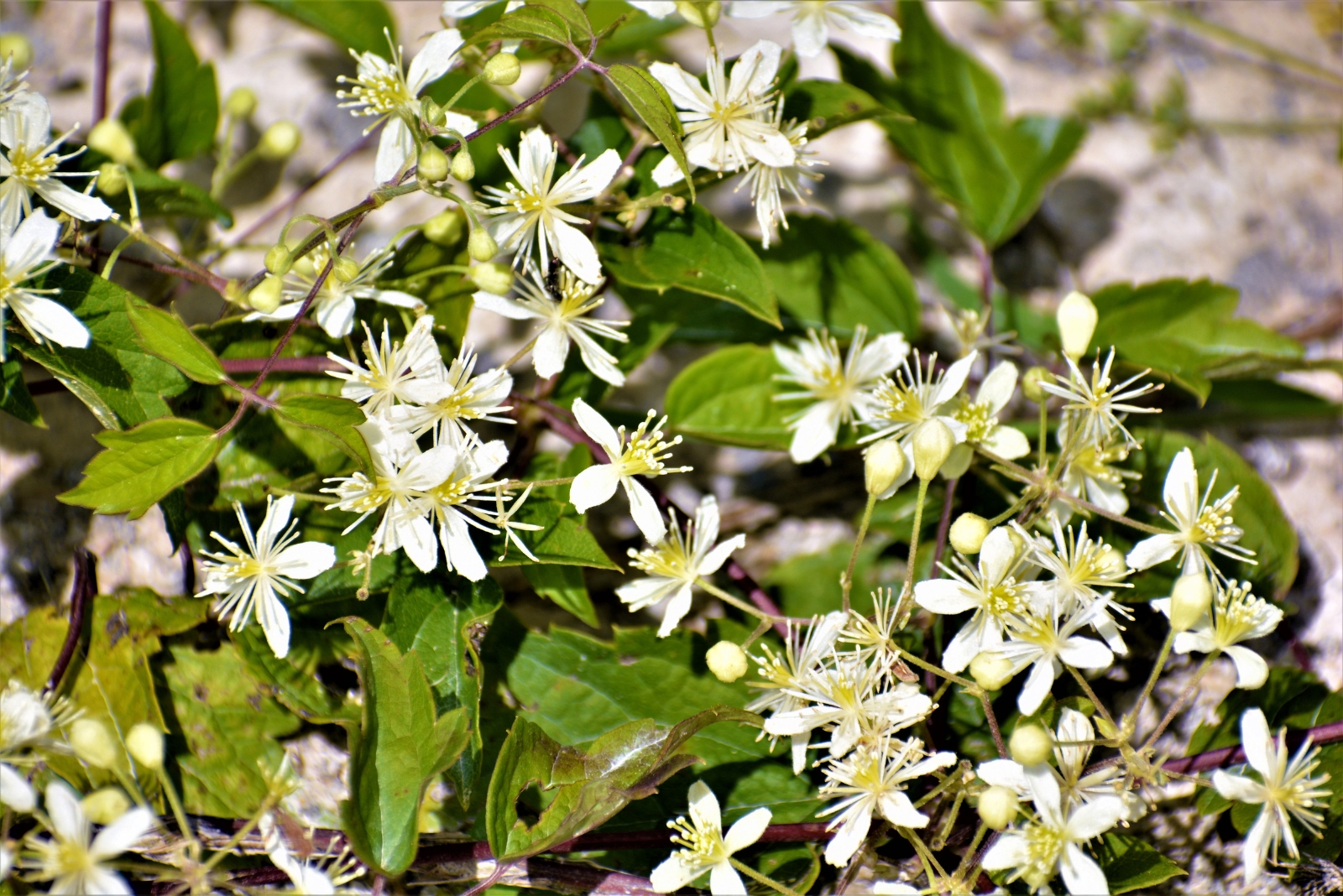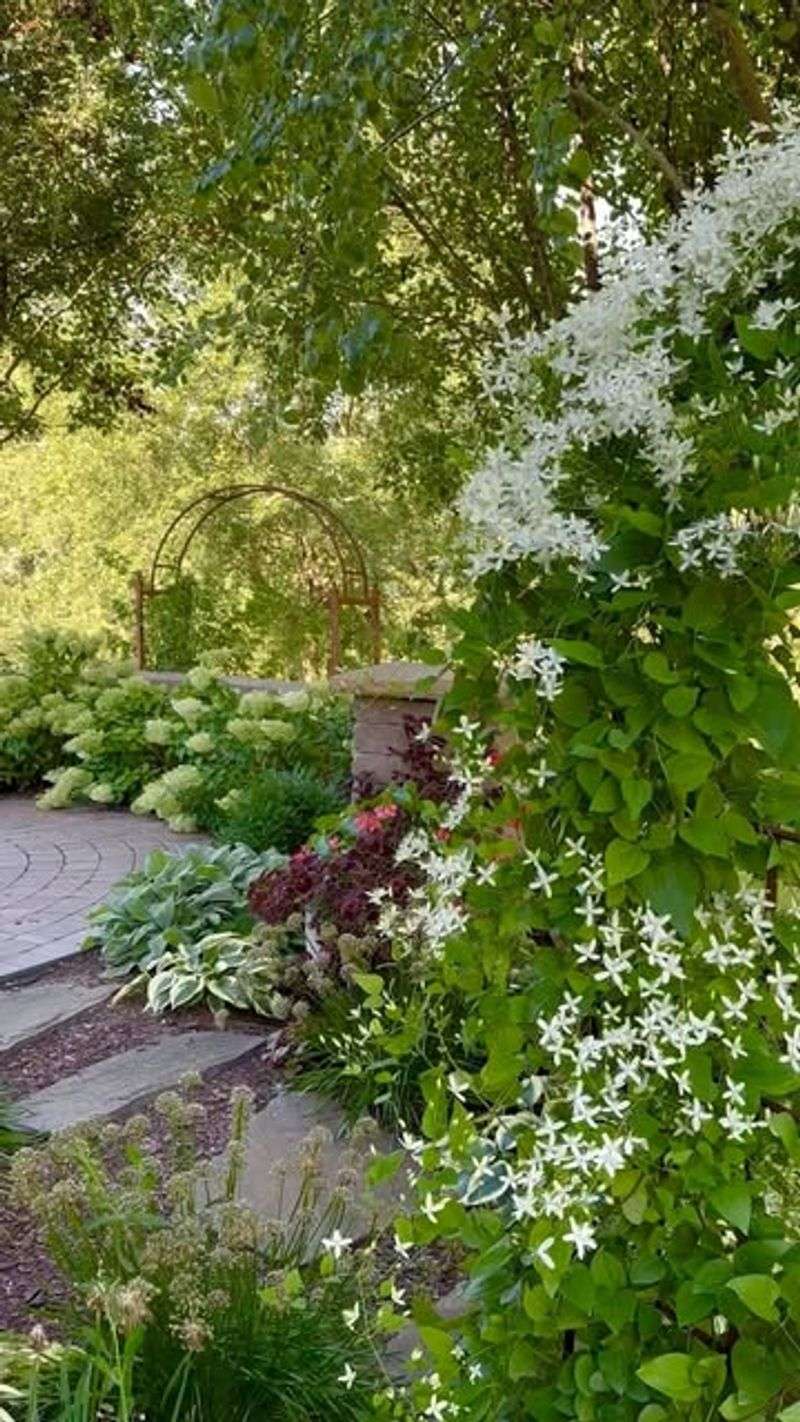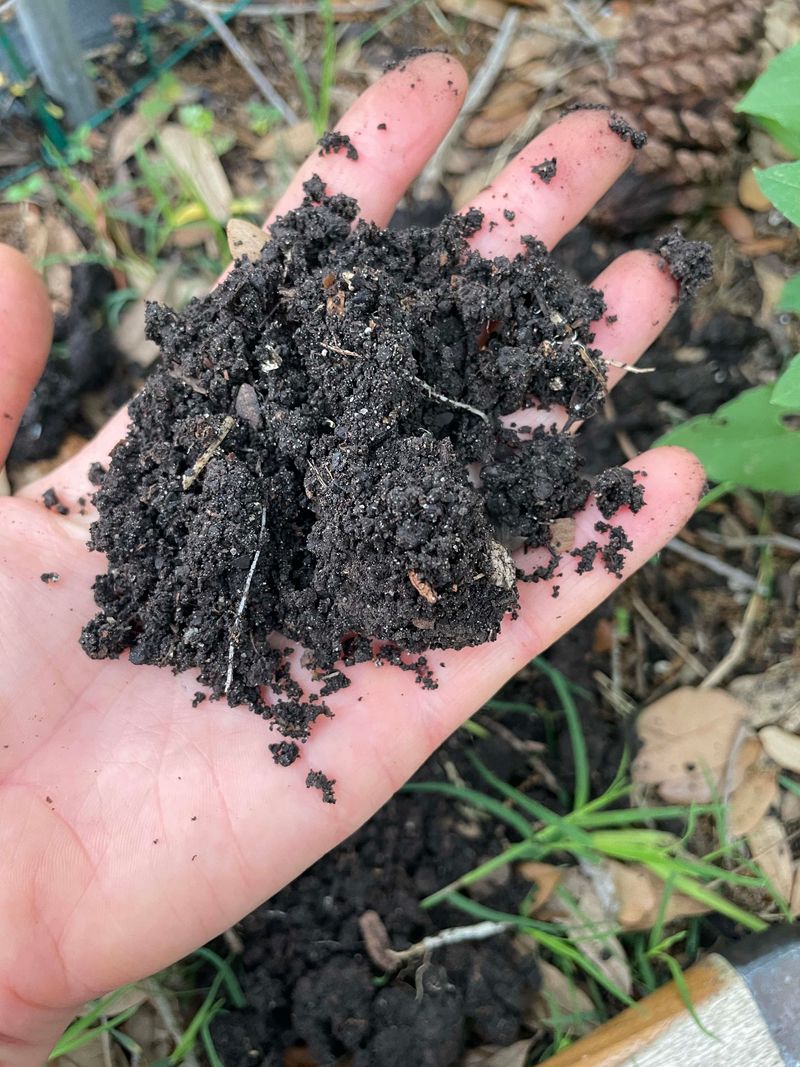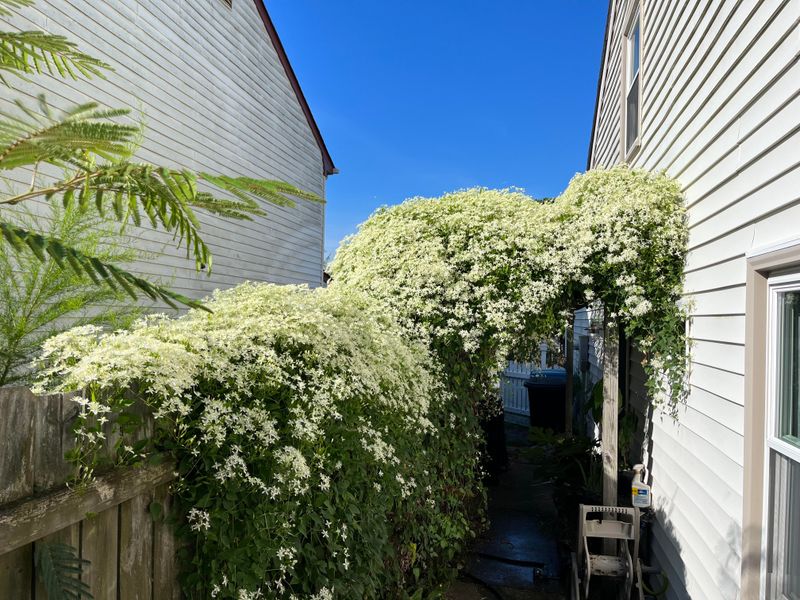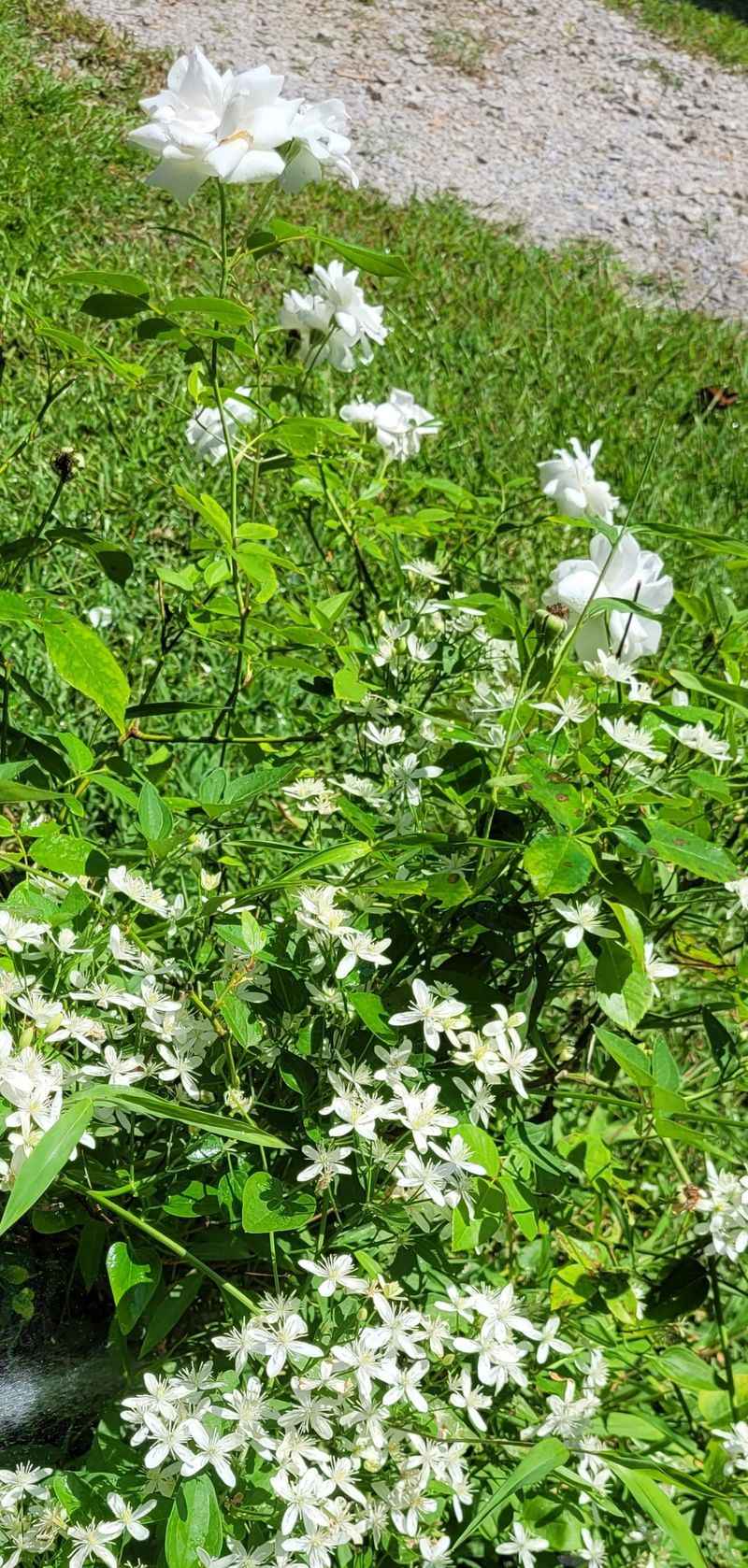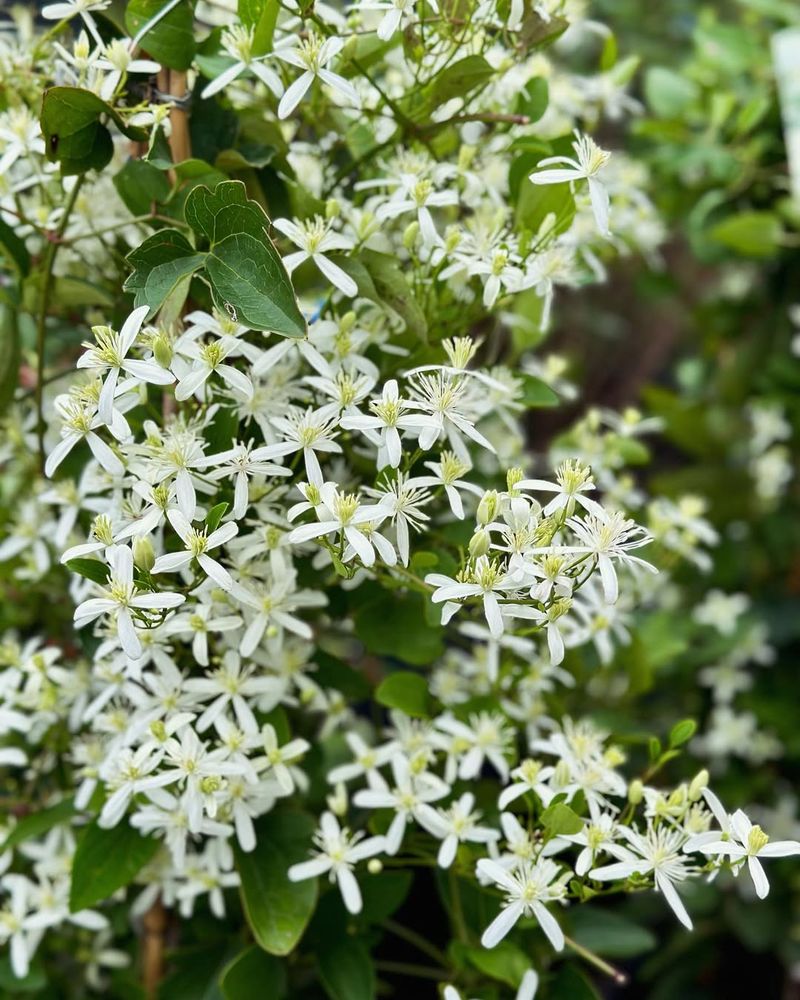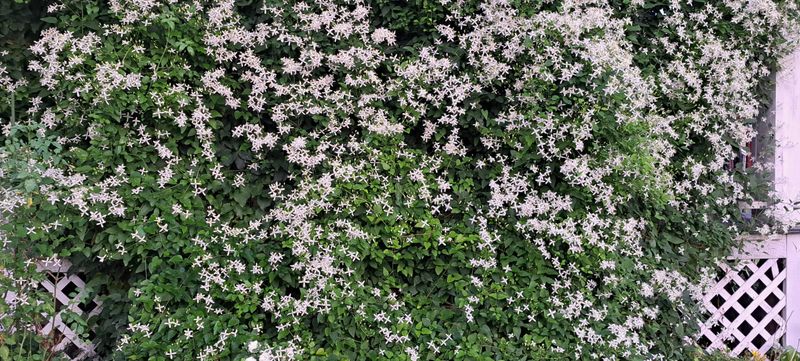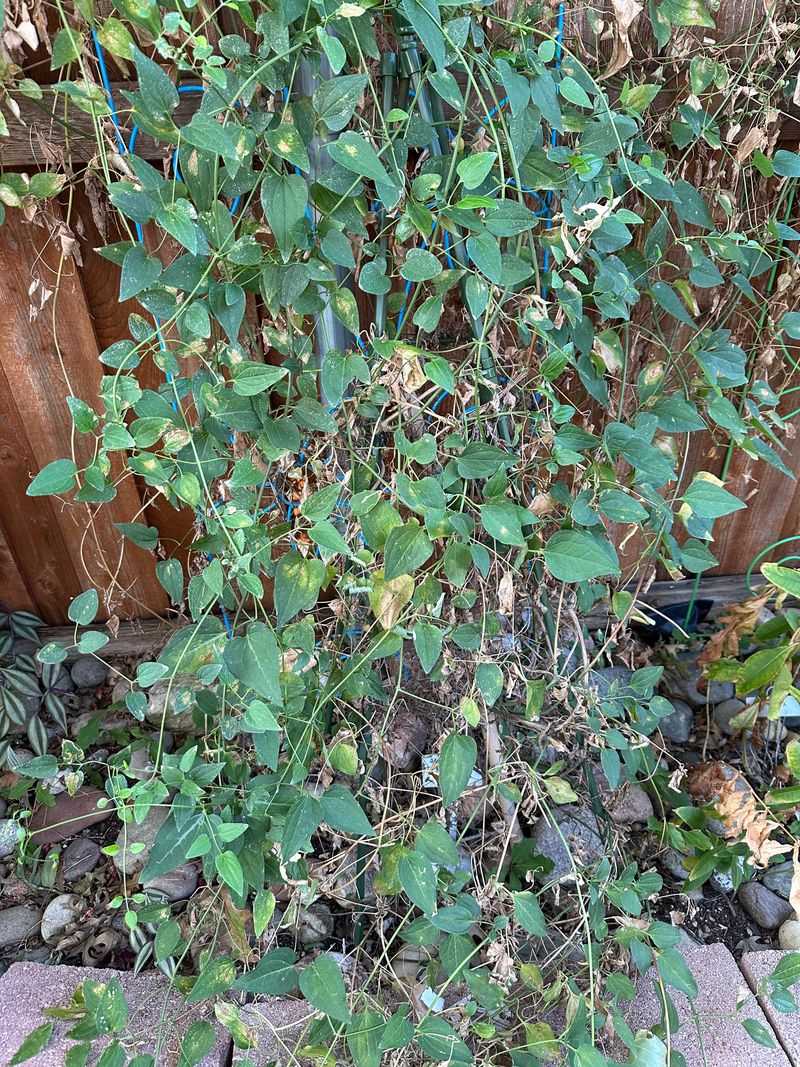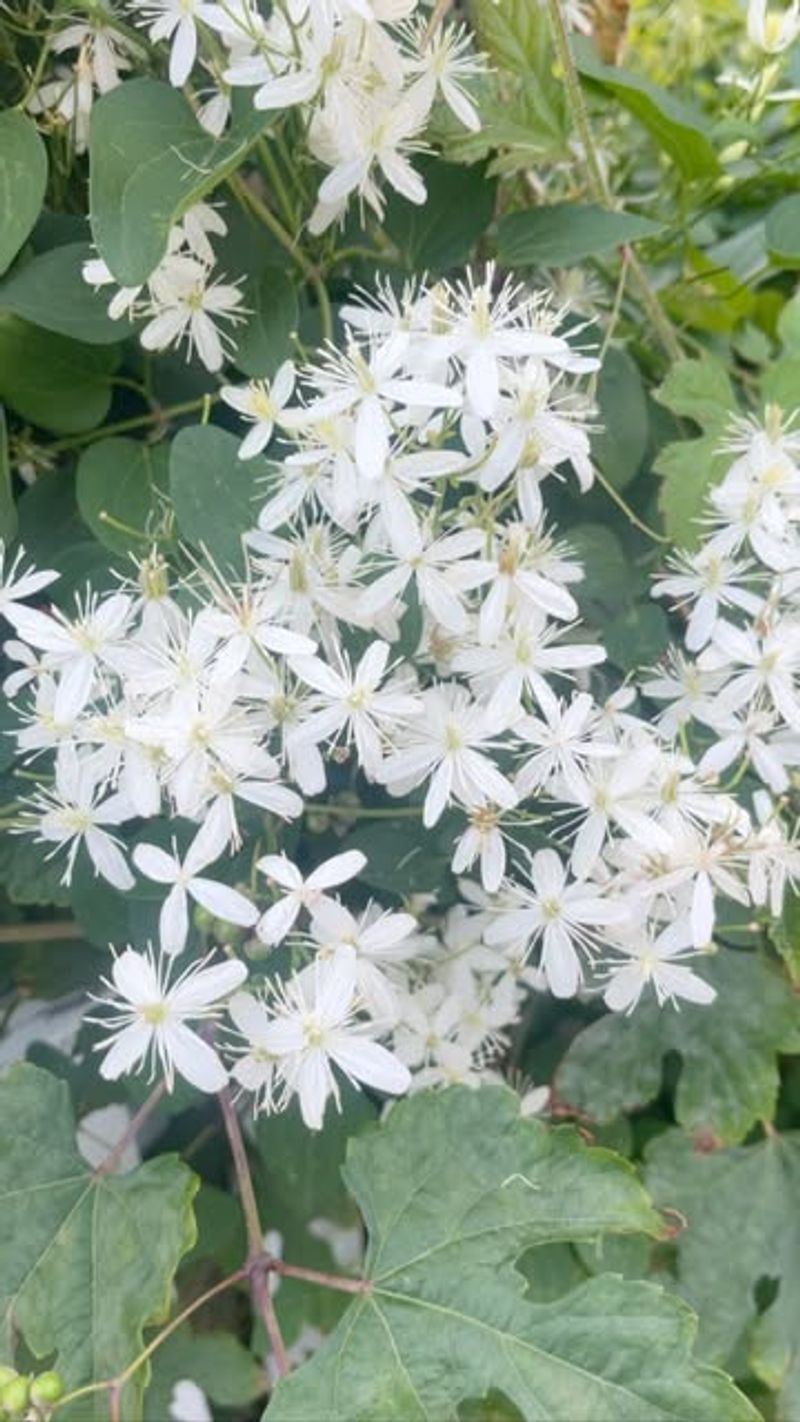Florida’s warm weather makes Sweet Autumn Clematis grow like it has something to prove. I’ve seen it turn a regular fence into a sheet of soft white blooms almost overnight.
Give it a bit of guidance and it stays lovely instead of overwhelming the yard. Florida gardeners know this vine can be a real showpiece with the right touch.
1. Choose the Right Planting Location
Finding the perfect spot makes all the difference for your Sweet Autumn Clematis. In Florida, partial shade works best, especially during the intense afternoon heat that can stress the plant.
Morning sun combined with afternoon shade creates ideal conditions. Your vine needs something sturdy to climb, like a fence, trellis, or arbor.
Good air circulation prevents fungal issues common in Florida’s humid climate. Space plants at least three feet apart for healthy growth and proper airflow throughout the growing season.
2. Prepare Soil with Proper Drainage
Sweet Autumn Clematis absolutely loves well-draining soil, which is crucial in Florida where heavy rains are frequent. Sandy soil common throughout the state actually works well, but adding organic matter improves water retention.
Mix compost or aged manure into your planting hole before setting the vine. A slightly acidic to neutral pH between 6.0 and 7.0 suits this plant perfectly.
Avoid areas where water pools after rainfall, as soggy roots lead to rot and disease problems that plague Florida gardeners.
3. Water Consistently During Establishment
New clematis vines need regular watering to develop strong root systems in Florida’s warm environment. Water deeply two to three times weekly during the first growing season, adjusting based on rainfall.
Once established, these drought-tolerant vines require less frequent watering. Morning watering helps foliage dry quickly, reducing fungal disease risks in humid Florida conditions.
During dry spells, provide supplemental water to keep plants healthy. Mulching around the base helps retain moisture and keeps roots cool during scorching summer months.
4. Fertilize Regularly for Abundant Blooms
Feeding your Sweet Autumn Clematis encourages the spectacular flower display that makes this vine so popular. Apply a balanced, slow-release fertilizer in early spring when new growth emerges across Florida gardens.
A second feeding in midsummer supports the fall blooming period. Choose a fertilizer with equal nitrogen, phosphorus, and potassium ratios for best results.
Avoid over-fertilizing, which produces excessive foliage at the expense of flowers. Organic options like compost tea work wonderfully in Florida’s sandy soils.
5. Prune Strategically for Healthy Growth
Pruning keeps your Sweet Autumn Clematis manageable and blooming beautifully in Florida landscapes. This variety blooms on new wood, so late winter or early spring pruning works best before new growth starts.
Cut stems back to about 12 inches from the ground to encourage vigorous new shoots. Remove dead, damaged, or tangled vines anytime throughout the year.
Regular trimming prevents the plant from becoming overgrown and overwhelming structures. Florida’s long growing season means vines can become quite aggressive without proper maintenance.
6. Provide Strong Support Structures
Sweet Autumn Clematis grows vigorously in Florida’s climate and needs sturdy support to showcase its beauty. Install trellises, arbors, or pergolas that can handle significant weight as the vine matures.
Wire mesh or lattice panels work excellently for horizontal surfaces. The vine climbs using leaf stems that twist around supports, so provide structures with openings for grasping.
Secure supports firmly in the ground, as Florida’s summer storms can topple weak structures. Regular training guides growth in desired directions.
7. Monitor for Common Pests and Diseases
Vigilance helps protect your clematis from problems that affect Florida gardens. Spider mites, aphids, and whiteflies occasionally attack, especially during dry periods when plants are stressed.
Inspect leaves regularly for yellowing, spots, or webbing that indicate pest activity. Fungal issues like powdery mildew appear in humid conditions with poor air circulation.
Treat problems early with insecticidal soap or neem oil for pests, and improve airflow to prevent disease. Healthy, well-maintained plants resist issues better than stressed ones in Florida’s challenging climate.
8. Mulch to Regulate Soil Temperature
Keeping roots cool is essential for Sweet Autumn Clematis success in Florida’s intense heat. Apply a two to three-inch layer of organic mulch around the plant base, keeping it away from stems.
Pine bark, wood chips, or shredded leaves work wonderfully and break down to enrich soil. Mulch also suppresses weeds that compete for nutrients and water.
Replenish mulch as it decomposes, especially before summer heat arrives. Cool roots combined with sun-warmed foliage create the perfect balance for vigorous growth in Florida gardens.
9. Enjoy the Fragrant Fall Blooms
Late summer through fall brings the reward for your efforts when Sweet Autumn Clematis blankets itself in fragrant white flowers. The sweet scent attracts butterflies and beneficial pollinators to your Florida garden.
Thousands of small, star-shaped blooms create a stunning display that brightens landscapes during the season. Cut flowers last several days in arrangements, bringing the delightful fragrance indoors.
Deadheading spent blooms isn’t necessary, as attractive seed heads add winter interest. Enjoy the spectacular show that makes this vine a Florida garden favorite.

